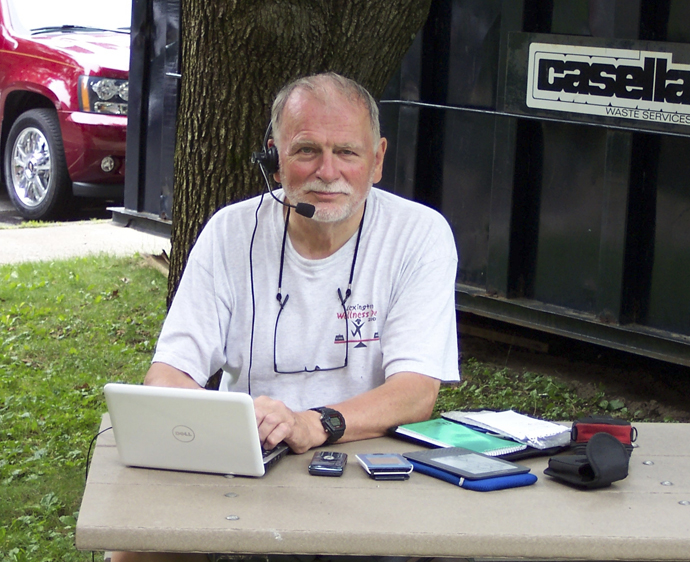Making Town Government Work

The articles worked out differently, it is true, but both were characterized at some point as failures of major boards to lead adequately. The need for Article 17 was laid at the feet of the School Committee while the way Article 16(e) played out was thought to be a failure on the part of the Board of Selectmen.
But that is the magic of Town government. Sometimes things end up exactly as they should.
Transportation of students to schools in private vehicles is out of hand by most accounts. I live in the middle of an elementary school traffic pattern so I know that the increase in school-based traffic is more than just a rumor.
The planning process for the new Estabrook School brought traffic into sharp focus when it was realized that to handle traffic queuing on site might require more than 1,400 feet of roadway. This could lead to widening of access roads, increases in impervious surface, reduction of play space, and other changes, all to handle a twice-a-day problem.
At its core, this was not a school issue. This was a community issue. The schools and the School Committee had an important role and that was to not throw up any roadblocks to a better plan, but making this a purely school issue meant an almost impossible task of assigning priorities.
Can I reasonably expect the School Committee to be able to say that returning foreign language to the elementary schools ranks below a car-related issue? They already have a daunting number of priorities to try to balance. Making them completely responsible for changing the culture surrounding student transportation was, I thought, asking a bit much.
The Selectmen were in the same bind with the White House. Everyone agreed it was an eyesore. But too many conflicting priorities, too little money, too many competing interests, too many projects already in the works, a 300th anniversary coming up, and a citizenry already paying out a goodly share of their income in taxes made it hard for the selectmen to do anything else except what they did which was to vote to indefinitely postpone the article which meant it would remain an eyesore for at least another year. Oh, there had been a suggestion to simply raze the structure or to move it off site, but for many reasons those were never going to fly, at least in my lifetime.
The solution for school transportation—somehow get more students to ride the bus—came from a citizen article proposed by Judy Crocker and backed by various groups like Safe Routes to Schools. Judy has been a leader in the effort to get kids to walk and ride the bus for years. With a survey in hand which indicated that lower bus fees would increase ridership, Article 17 proposed a way to lower those fees. The very much misunderstood funding piece took awhile to grasp, but finally just about everybody realized that we were risking a relatively small amount of money and the money needed would actually decrease if more students rode the bus.
Moreover, a tie to Lexpress could be created which would allow students to take the school bus in the morning and Lexpress in the afternoon. Credit that one to a forward-thinking Town Transportation Coordinator, the Transportation Advisory Committee, and a Board of Selectmen who listened and acted.
The solution for the White House emerged as an amendment to the attempt to indefinitely postpone the article. That would have meant no funding for the external stabilization of the building, but the Capital Expenditures Committee disagreed and proposed going ahead with the work against the wishes of the Selectmen. Both the amendment and the article passed with votes to spare so by this time next year, I will not have to wince every time I go to the Farmers Market or walk to the Senior Center.
For both school transportation and making the White House less of an eyesore, the public, acting through Town Meeting, accepted both problems as community problems and took the steps necessary to address them.
The underlying plans supporting both articles were not seat-of-the-pants efforts. Both were backed by extensive preparation and well thought out plans. Moreover, in both cases we now know there is an acceptance of broad responsibility for the article. Instead of one board standing up to push for passage of an article, in both cases a much larger group has said that they will help make things happen. With anything you do in Town government you hope that is the case, but it is gratifying to see a demonstration of that fact.
I understand that you may not agree with the solution in either case, but it is the process I am interested in. Boards have responsibilities which can get in the way of solutions so every now and then outside help is needed. I was impressed this year that in an orderly and, dare I say it, collegial, way that outside help weighed in and was heard. The funny thing is that this has actually increased my appreciation for the problems boards must deal with and how important demonstrations of acceptance of responsibility are.
Boards still have to do most of the heavy lifting they were elected to do, but it is nice to know that there really are checks and balances in place and sometimes they even work.
